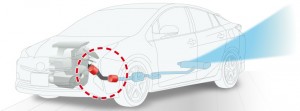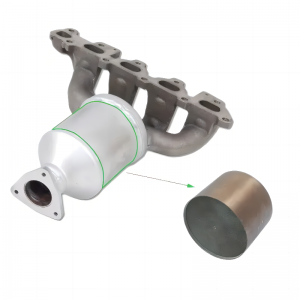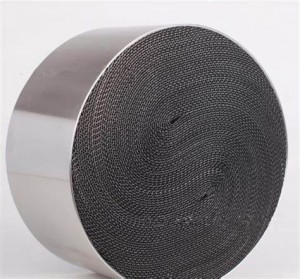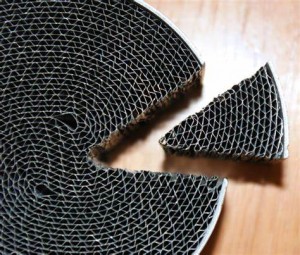Introduction
Three-way catalysts (TWCs) play a crucial role in reducing harmful emissions from internal combustion engines. Metal carriers are an essential component of TWCs, providing the necessary surface area for active catalytic sites. The selection and design of metal carriers are critical to achieve the desired catalytic performance in various application scenarios. This article explores the application scenarios of metal carriers in TWCs and their influence on catalytic reactions.
Gasoline Vehicles
Gasoline vehicles dominate the global automotive market, and TWCs are extensively used to control emissions from these engines. Metal carriers in gasoline TWCs must possess high-temperature stability, resistance to catalyst poisoning, and excellent oxygen storage capacity. Elevated operating temperatures necessitate metal carriers with good structural integrity to ensure long-term catalyst performance. Additionally, metal carriers with high oxygen storage capacity enable efficient conversion of pollutants under fluctuating stoichiometric conditions.
Diesel Vehicles
Metal carriers in diesel TWCs face unique challenges due to the different exhaust gas composition and higher combustion temperatures compared to gasoline engines. The exhaust gas from diesel engines contains higher levels of nitrogen oxides (NOx) and particulate matter (PM). Metal carriers in diesel TWCs are designed to provide effective NOx reduction and oxidation of harmful particulates. These carriers need to exhibit excellent sulfur resistance, high stability at elevated temperatures, and low-temperature catalytic activity. Moreover, metal carriers should maintain high NOx conversion efficiency even in the presence of significant soot loading.
Hybrid Vehicles
Hybrid vehicles, incorporating both internal combustion engines and electric powertrains, present specific requirements for metal carriers in TWCs. Rapid light-off capabilities are crucial to achieve efficient catalytic activity during cold starts when the engine is initially cold and producing high emissions. Metal carriers in hybrid TWCs should possess enhanced oxygen storage capacity to enable rapid light-off, ensuring effective pollutant conversion during transient operating conditions. Moreover, the reduced engine size in hybrid vehicles calls for metal carriers that can perform optimally under lower exhaust gas flow rates.
Challenges and Future Directions
As emission standards become more stringent, metal carriers must continuously improve to meet evolving requirements. Stricter regulations demand higher conversion efficiency, extended catalyst lifetime, and reduced precious metal usage. Researchers are exploring advanced metal carrier materials, such as mixed metal oxides and novel catalyst formulations, to enhance catalytic activity and durability. Additionally, the electrification of vehicles and the emergence of alternative fuels pose challenges for metal carriers. Novel designs and compositions are required to adapt to changing exhaust gas conditions, such as those encountered in hybrid-electric vehicles or vehicles fueled by hydrogen or natural gas.
We can supply both metal Honeycomb Substrate coated with noble metals of Pt, Pd, Rh and without noble metals. We produce catalysts which are suitable for car or motorcycles in all types and can meet the emission standard Euro II, Euro III, Euro IV and Euro V. Metallic substrate can withstand temperatures of up to 1300 ℃. Metallic substrates have honeycomb-like structures with thousands of parallel channels. The walls of these channels provide the surface to convert harmful emissions into carbon dioxide, nitrogen and water vapor.
Conclusion
Metal carriers play a vital role in the performance of TWCs, contributing to the efficient reduction of harmful emissions. The application scenarios of metal carriers in TWCs vary depending on the vehicle type, fuel, and operating conditions. Gasoline, diesel, and hybrid vehicles have distinct requirements, necessitating tailored metal carriers for optimal catalytic activity and durability.
Future research should focus on developing advanced metal carrier materials and innovative designs to meet the challenges posed by stricter emission standards and emerging technologies. By continuously improving metal carriers, researchers can contribute to the development of more efficient and environmentally friendly TWCs.
Cat Environmental Protection, has been focusing on environmental protection, focusing on tailpipe emission treatment, while striving to practice industry standards and assume social responsibility, the company itself has developed rapidly. The company has won the title of “technology-based small and medium-sized enterprises, regulated enterprises”, and has more than 10 invention patents. I believe that the acquisition of
various honors is a manifestation of the company being widely recognized and highly valued by all sectors of society, and it is also the best return for the company’s hard work and huge efforts. We sincerely hope that with all friends from all walks of life who care about and support the development of China’s environmental protection cause, we can work together to create a beautiful green home and create a blue sky together.
Post time: Aug-18-2023










